AUSA is just around the corner! AUSA’s Annual Meeting offers a unique opportunity to network with other defense contractors and military personnel, gain insights into the Army’s priorities heading into the following year, and stay updated on industry trends. Here is your guide to making the most of your AUSA experience:
-
Set Clear Goals:
Before attending the conference, define your objectives. Are you looking for new partnerships, seeking the latest information on military technology, or showing off the capabilities of your organization? Having clear goals will help you tailor your conference experience accordingly. Research the agenda and create a schedule that aligns with your goals. Identify key speakers, panels, and exhibitors you want to visit. The Exhibitor’s Hall can be overwhelming, so make sure you review the map before you go and plan which booths you would like to see and who you would like to speak with.
-
Network with Purpose:
Networking is one of the main reasons people attend conferences. Don’t just collect business cards; engage in meaningful conversations. Prepare an elevator pitch that clearly conveys your company’s capabilities and what you’re looking for. After the conference, don’t let the connections you’ve made go cold. Send follow-up emails or connect on LinkedIn to express interest in further collaborations or partnerships. Don’t forget to personalize your messages to remind the person of your conversation.
-
Get Tickets to a Social Event:
There are several events hosted by AUSA that are outside the conference agenda that you can purchase tickets to. These events are less formal ways to meet people in the industry and many of the events include food and live entertainment. You can purchase tickets on-site at the convention center the day of the event and AUSA members get a discount.
-
Leverage Your Company’s Social Media:
Ensure that you and your organization follow AUSA’s official social media accounts and use the hashtag #AUSA. Share your thoughts, engage with other attendees, and stay updated on any last-minute changes or additions to the program. If you are exhibiting, make sure your organization posts a picture of your booth and your booth number so other attendees know where to find you.
-
Download the AUSA App:
You can create a personalized schedule for your conference experience and view the convention center map when you download the AUSA app. There are a few networking features that have been added this year to help you expand your professional network.
-
Know the Area Around the Convention Center:
The Walter E. Washington Convention Center is located next to Mt. Vernon Square in DC. For a convenient coffee break or informal meeting, check out Compass Coffee or Unconventional Diner. For a quick lunch, check out Pearl’s Bagels, Shouk, or Wise Guys Pizza.
-
Start Planning For Next Year:
It is never too early to start thinking about next year! If you are thinking about having a booth at AUSA next year, ensure that your organization’s brand stands apart from your competition. Your booth is your battlefield, and a well-designed booth can attract and engage visitors effectively. While you are walking through the Exhibition Hall, take note of the booths that you like and which booths you do not like. The best trade show booths have a simple layout, are accessible to attendees, and probably entice visitors with swag. You may want to incorporate interactive elements like touchscreen displays or virtual reality experiences to engage attendees. These experiences can also be an effective start to a lead nurture campaign for your organization with the right post-event strategy and follow-up.
Attending AUSA can be a catalyst for growth for your company. By setting clear goals, networking effectively, and staying engaged in the industry, you’ll not only make the most out of the event but also position your business for long-term success in the defense and government contracting space.
According to Mordor Intelligence, The mergers and acquisitions (M&A) in aerospace and defense market size is estimated at USD 175.36 Billion in 2023 and is expected to reach USD 311.40 Billion by 2028. This remains one of the largest capital-intensive sectors as a result of the meticulous R&D needed to expand, enhance, and integrate product portfolios and stand out in the competitive landscape.
The aerospace and defense (A&D) sector is continuing to consolidate the supplier base to remove unnecessary costs and prolong its place in the market. One of the best examples of this is the 2019 United Technologies Corporation (UTC) and Raytheon Company (Raytheon) all-stock merger to consolidate their spot in the A&D sector. The successful merger achieved improved economies of scale, strengthened R&D, and provided a more diverse portfolio of products.
The Raytheon / UTC merger and its recent rebrand is a prime example of the importance of modernizing a company’s brand and digital identity. Since its founding in 1922, Raytheon has bared its name for over a century. With time, experience, and proven results comes recognition, so the switch to a new name may seem risky. But in order to stay competitive, be inclusive of broader capability sets, and look well-equipped to take on new modern challenges, the switch to the new name, RTX, was extremely intentional.
“RTX is a nod to the past and a nod to the future” – RTX’s CEO Greg Hayes.
Not only is the new three-letter name (and .com domain) simple, unique, and easy to remember, but it also is the same three letters as its stock ticker symbol, which is a combination of United Technologies previous symbol (UTX) and Raytheon’s (RTN), further exemplifying the union of the two companies and brand consistency across all channels. Another recent merger sporting the simplified 3-letter name and domain is the $2.1B combination of Vectrus and Vertex, now V2X.
A brand name change is a powerful move for a company, and there are several factors to consider when undergoing this transformation. Luckily the experts at Bluetext, one of the best DC brand strategy and government PR firms, can help. For more on naming, check our latest insights.
Private Equity has become a major spearhead in the A&D market and now accounts for 47% of transactions and 41% of deal value. Some major A&D mergers that went through recent successful rebrands propelled by PE firms include:
Centauri (now KBR)
When Arlington Capital Partners acquired three leading companies in the national security sector—Integrity Applications Incorporated, Xebec Global, and Dependable Global Solutions—the IAI team turned to Bluetext to develop and launch a new unified brand from scratch. In less than 6 months, the teams worked together to launch Centauri.
The name was inspired by the Centauri star system made up of some of the brightest stars in the sky. The logo represents the company; a group of brilliant minds composing a star system, brought together by the gravity of the mission to form this C shape as seen in the logo:

The new name and brand were crucial to showcasing the “stronger together” mentality of merging big players in the A&D sector. The rebrand was so effective that within just a year, KBR acquired Centauri, significantly expanding its military space, defense modernization, and cyber solutions portfolio. For more on this successful rebrand, check out Bluetext’s Hall of Fame featuring Centauri.
BlueHalo
Another Arlington Capital Partner acquisition consisting of AEgis Technologies, Applied Technology Associates, and Brilligent Solutions, looked to Bluetext to merge these powerhouse national-security teams together into one superior brand, BlueHalo.
The name BlueHalo represents the unbroken global line that ensures the technical advantage in the most advanced battlespace. The logo embodies the name by featuring a blue swoosh shape that depicts in a clean but strong manner, a halo of protection. It also supports the company’s brand line, “Leading the Transformation of Modern Warfare”

Since the 2020 rebrand, BlueHalo has rapidly strengthened its leadership positions in Space, Cyber, AI/ML, Counter-UAS (c-Unmanned Aerial Systems), and Autonomous Systems, with multiple acquisitions in record time. For more, read about Bluetext and BlueHalo’s partnership or watch the powerful brand essence video that Bluetext created.
Tria
When another private equity firm, Sagewind Capital, acquired Federal Advisory
Partners, Universal Consulting Services, and FavorTech Consulting, Bluetext helped merge these top-performing companies into one stronger, unified brand – Tria Federal.
The simple, punchy, and welcoming name, Tria, is the Greek word for three, representing the company’s commitment to 3 pillars of service:
- Service to Clients
- Service to Colleagues
- Service to Communities
The logo embodies these 3 pillars through approachable and patriotic brand application as a nod to its federal government audience as being the partner of choice in the path to possible. See more about Bluetext and Tria’s work together here.

Axient
Following a series of promising mergers and acquisitions from Private Equity firm Sagewind Capital, QuantiTech came to Bluetext for expertise and strategy to consolidate legacy companies into a new brand name and identity. Axient became the new corporate name to unite offerings & employees under one mission-driven, innovative narrative.
With a new name and logo design, the Axient brand identity was developed to visually encompass the value of the newly merged company. Sharp angles were intended to symbolize Axient’s cutting-edge expertise while the orbital curves showcase the full-spectrum lifecycle support offered to customers to “accelerate possible”. Watch the visual identity and mission come to life through the brand essence video and learn more about the work Bluetext and Axient completed together.
![]()
If you’re looking to revamp your company’s name and/or corporate image, connect with Bluetext, the top DC government contracting and aerospace marketing firm, to ensure you get the most out of your marketing efforts.
Digital transformation creates challenges and opportunities for B2G marketing leaders seeking to sell to government agencies. The appetite for digitization of citizen services accelerated during the pandemic as agencies recognized a more intense need to transform communications and engage with citizens. At the same time, the DoD moved forward with a digital-forward strategy to guide the industry on how to best deliver transformative technologies.
B2G brands competitively positioning themselves to pursue and capture digital transformation-driven contract opportunities benefit from a smart, holistic public relations program aligned with the pace at which agencies are evaluating, adopting, and deploying new technologies.
So much of Bluetext’s PR and marketing work with government contractors and IT providers involves a keen understanding of how government buyers evaluate, procure and deploy technologies and services – and the messages that resonate most with them. For B2G marketers creating PR programs that tap into public sector digital transformation, there are a few key considerations:
Agencies Don’t Transform Overnight
Less than one in ten (7%) government leader respondents in an EY 2022 report said they believe their organization has achieved its digital transformation goals. This doesn’t mean that digital transformation isn’t moving forward but serves as a gut check that B2G brands must stay attuned to the pace of change.
The tricky balance for B2G CMOs is to effectively communicate how their products, technologies, and services can future-proof agencies while acknowledging that legacy technology investments cannot be unwound overnight. In other words, media coverage and thought leadership cannot ignore where agencies are today.
Similarly, there are nuances to digital transformation messaging, for example when it comes to workforce automation. PR may be required to address the fact that, among government workforces, transformation can create uncertainty. Artificial Intelligence and automation can equate to fears of employees being replaced. If B2G brands leave it up to the agency customer to overcome workforce resistance to new technologies, adoption can be slowed and contract opportunities will dwindle.
Match Thought Leadership To Right Hype Cycle
There are perils to spinning wheels on Gartner Hype Cycle™ “Innovation Trigger” technologies that may be garnering media coverage but are years away from commercial viability. The “Innovation Trigger” hype cycle phase refers to when “A potential technology breakthrough kicks things off. Early proof-of-concept stories and media interest trigger significant publicity. Often no usable products exist and commercial viability is unproven.”
In the 2022 Gartner Digital Government Services Hype Cycle, the research firm identifies technologies such as Metaverse, immersive meetings, and influence engineering and machine customers that are years if not decades away from reaching a plateau.
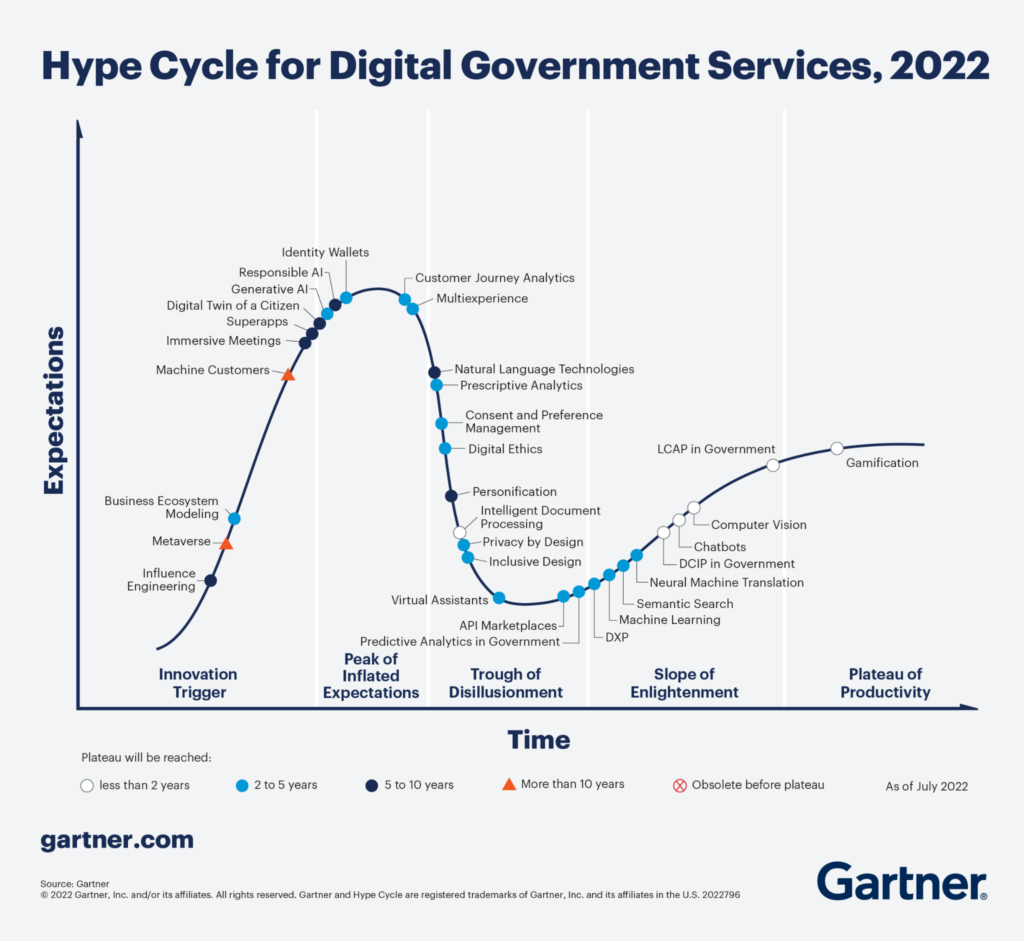
In the same way that CIOs need to keep their eyes on potentially transformative technologies and practices that are years from widespread adoption – and start developing positions on these trends – marketers must think about how best to associate their brands with these emerging technologies. Thought leadership programs are a good place to start.
We work with B2G brands that face diverse challenges on the sales side. For some, they may be an established, credible brand seeking to sell a product or technology their brand isn’t traditionally associated with. This could be a result of mergers and acquisitions that have unlocked new product portfolios and capabilities. In other cases, behemoth brands are being challenged by nimble, upstarts perceived to have more cutting-edge solutions. Hundreds of challenger brands have turned to Bluetext for PR services to help provide air cover for the sales team – so that they aren’t spending half the meeting establishing credibility and can just sell based on merits.
Finally, disruptor technologies can create sufficient confusion to paralyze the buying process. Thought leadership can educate target markets to prevent this from occurring. Case in point: ChatGPT, which is spinning the heads of marketers and communications professionals across all industries. If you provide automation technologies to the public sector, agency decision-makers may wonder if a costly solution will be rendered obsolete by ChatGPT in 12-18 months and decide to wait it out. More likely, ChatGPT can be used to augment a solution, but buyers will never know that without effective earned and paid content campaigns.
Thought leadership programs are an effective way for B2G marketers to:
- Start associating your brand with trends and technologies that you will be offering in the near future without creating headaches for the sales team by sending traffic to a source with no product
- Educate the market on pain points that your solution will address, so that when you do launch the value proposition has been established
- Build up a Subject Matter Expert (SME) program with experts who can become sources on these technologies for journalists or generate interest from conference organizers
Data-Driven PR Can Make Or Break The Transformation Case
B2G brands often sit on access to PR-valuable data that is untapped for various reasons. Are state and local government leaders tapping AI to deliver citizen services? Will federal healthcare leaders increase their spending on data analytics in the upcoming fiscal year? There are external entities that track some of this data, and there is always the option to drop $25,000 on a research firm to create a survey vehicle. But most firms have built valuable mechanisms to reach customers and prospects via email and other channels, and there are seamless, non-intrusive approaches to acquiring market data that can be used to anchor PR initiatives (media pitches, bylines, social media posts, etc.).
The value of the data is to gain a stronger foothold on where your customers and prospects are as it relates to digital transformation. Leveraging that data for media pitches, byline articles and social media strengthens the business case that there is a need and appetite for your technologies.
Get Creative Telling Customer Stories
From a PR and marketing perspective, it isn’t the word of the B2G brand that will have the greatest impact on an agency prospect – it is the voice of the customer. Because agencies moving forward with digital transformation want to see that what they want to do has been done before. That digital transformation is possible, that ROI is quantifiable and that investments are justifiable.
The problem? It can be extremely difficult to secure approval to publicize government customer stories through press releases, media coverage, website case stories or via social media. This is a common frustration our clients and prospects often mention right off the bat. Traditional methods of securing agency approval rarely work, which is why Bluetext deploys creative approaches to tell a customer story through award programs, events and other mechanisms.
If you would like to learn more about how to effectively create a B2G PR program that taps into public sector digital transformation, reach out to Bluetext at https://bluetext.com/contact-us/.
Finding Success in Public Sector PR
According to Fortune, Walmart is considered the largest company globally, with an annual budget of approximately $524 billion dollars. However, one entity dwarfs Walmart with a massive $1.5 trillion dollar budget – The Federal Government of the United States. Although many analysts predict a slump in procurement spending in 2022, the United States federal government is still the most lucrative and prized customer globally.
Finding success in communicating with government customers is an area many companies fall short of due to a fundamental misunderstanding of the golden rule of the public sector: Communicating to the government is uniquely different from any other audience, whether it be businesses or consumers.
To navigate these unique waters, you need an experienced team that understands the government agency and worker from top to bottom and who works and breathes the ins and outs of the ever-changing and complex world of communicating with the public sector. Also, know that a true public sector communications professional is a rare breed. While some PR professionals have worked for a public sector client, there are painfully few that specialize in this area, and they are becoming harder and harder to find.
Give it to the pros. You go to a doctor when you are sick. You seek a lawyer when needing legal advice. Even the military has special forces to handle the most difficult tasks. It is imperative to know when to seek the skills and guidance you need for a specialized task. The communications and networking landscape that is more complicated than ever, so don’t attempt to navigate it without qualified public relations guidance.
If you have a public sector division, you need a specialized team to support your engagement and communications efforts. It’s a lot like the intro to the 80’s TV show the A-Team.
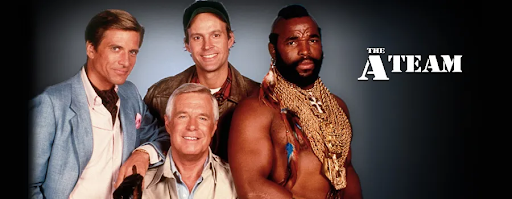
If you have a problem, and no one else can help, and if you can find them, maybe you need to hire. . .
the Public Sector PR team.
Without having to get into any arguments on where Mr. T fits into the grand scheme of my symbolism, the important takeaway is simply this: a public sector PR team is a lean, highly-specialized group of professionals that will provide support and guidance for your organization to maximize success in the government space. Full Stop.
Unique Needs of the Public Sector
Government agencies and the people that work within have uniquely different needs and offer challenges not seen in private sector businesses. They respond to their own language and terminologies – and traditional marketing buzzwords fall flat in the government sector. In order to engage and communicate effectively, your public sector PR program needs to speak to the distinct demands and needs of both the government official and their respective agencies’ core mission.
Simply inserting words like ‘federal’ and ‘government’ into your existing enterprise messaging is not going to cut it with government audiences. Government employees have their own language, with each agency having a distinct dialect with mandates, certification requirements, and other factors that dictate how they shape their needs as well as find vendors. Federal, state, local, and education entities each have needs and challenges you need to hand-tailor your approach, messaging, and engagement to truly resonate with these audiences.
By having a B2G Public Relations team, you gain the proficiency and experience required to establish your organization, brand, people, and offerings to the public sector customer in a manner that provides long-term stability and success.
State, Local, and Education (SLED) PR
Much like federally public sector PR – state, local, and education comms require a specialized approach and methodology in order to educate, help drive leads, and raise awareness for your brand and services – often in multiple target regions. This is where your public sector PR team will also show extreme value in that SLED communication programs can be executed from any location, giving your organization both awareness and presence in multiple target areas without the need to have permanent ‘boots on the ground.’
Why is this important now? Government contracting dollars and opportunities for state, local, and education (SLED) budgets have made a comeback in 2022, with states showing the largest annual spending increase in more than a decade and many reporting tremendous tax revenue growth from 2021. This, coupled with federal aid from the American Rescue Plan Act and the infrastructure bill, point to substantial opportunities with SLED entities – and the right PR and marketing strategy can help you take full advantage of these opportunities.

A public sector SLED team is specially equipped to handle multiple regions with different cultural, governmental, and social norms to help you project an expansive market footprint for your brand and expertise in mission-critical areas. Whether it’s in Houston, Texas, or Fairbanks, Alaska, a strategic SLED PR campaign will help establish your presence where you need it.
Public Sector PR Expertise
Public sector teams, their missions, and definitions of success come in all shapes and sizes, many times wholly different from the rest of the business – and your communications program and PR team need to as well.
I can’t tell you how many times I’ve heard, ‘I can just use my corporate communications team to handle public sector comms.’ The response to this is a simple question – ‘Are you using your corporate sales team to sell into the public sector?’ Of course not; you need your sales team to know your customer base and the specifics of the marketplace – so you have a team that specializes in the public sector customer. Your organization is making a strategic investment to go after government customers, and that investment should include communications that specializes (just as much as your sales team) in that customer space. While your in-house comms team or corporate agency might be able to help get you started, these efforts will only be table stakes if you don’t have a team that truly understands the federal, state, local, and education sectors.
There are countless unique differences between the public sector and business/consumer corporate communications. Understanding sales cycles, trends that will gain traction, how social media works in the government space, and how to most effectively engage the people who are going to help make a difference in your public sector strategy are just some of the key differences and capabilities a public sector PR team will bring to your team to help drive success.
Measuring Success for Public Sector PR
Historically, measuring PR success has always presented challenges, and traditional means of measurement are not conducive to adequately measuring or portraying success in the public sector. Most companies rely on measuring PR efforts directly back to sales, which in the public sector is a tough row to hoe. Our public sector teams are adept at benchmarking and measuring the metrics that count the most in the public sector.
They have the ability to measure web traffic, inbound leads from content and social media, the share of voice, and qualitative comments from customers and partners – data points your team can rely on to justify and optimize your public sector engagement and confidently measure your public sector PR success.
Find Your Public Sector PR Team
You are now asking yourself – where can I find highly specialized public sector communications professionals to support my needs? Regardless of the size of your company or government division, Bluetext can help you establish, engage and scale your communications to the public sector and get the most out of your communication efforts! Contact Bluetext to help your organization drive B2G brand awareness and lead generation through public relations.
Where is the next great opportunity for your business? Well, government agencies for one. According to USAspending.gov, approximately five trillion dollars is being allocated to government agencies in Fiscal Year 2021, with over $1 trillion going to Health and Human Services alone. These agencies are growing, and their needs for hardware, software, and services are increasing along with them.
If you are already marketing to “the government,” you understand that winning government contracts is a long sales cycle. The opportunity-to-award process might be 90 days on average, but the lead-up to those 90 days is a critical period where the deal is won or lost. During those 90 days, all data gathering and relationship-building you have done over the previous 2-5 years comes to fruition. So what exactly sets the winning businesses apart? Memorability. Government contracting is a long game, built on endurance. After many years of B2G marketing experience, Bluetext is here to break down what gets your foot in the door and sustains success in business to government marketing.

Division of time between positioning your company for success with government agencies and bidding on specific contract awards.
Winning government contracts is not as simple as pointing your existing sales and marketing engine at a new target. “The government” is not a monolithic entity, and even “the agency” needs to be treated with more nuance: It is composed of dozens of sub-entities that make independent decisions based on independent decision criteria. In enterprise sales, winning over a single decision-maker can often close the deal. In government contracts, groups of stakeholders across the agency influence which business wins the contract, even if a single decision-maker completes the signs off. So instead of persuading a single stakeholder, B2G companies are tasked with winning over multiple groups, at multiple different stages and occasions. Hence, why brand endurance is critical.
Complicating matters further, traditional channels for establishing relationships with government agencies have been disrupted by the pandemic. Most in-person conferences and meetings will not occur this year, and some will remain online for the foreseeable future. Government stakeholders are more geographically distributed and digitally dependent than ever.
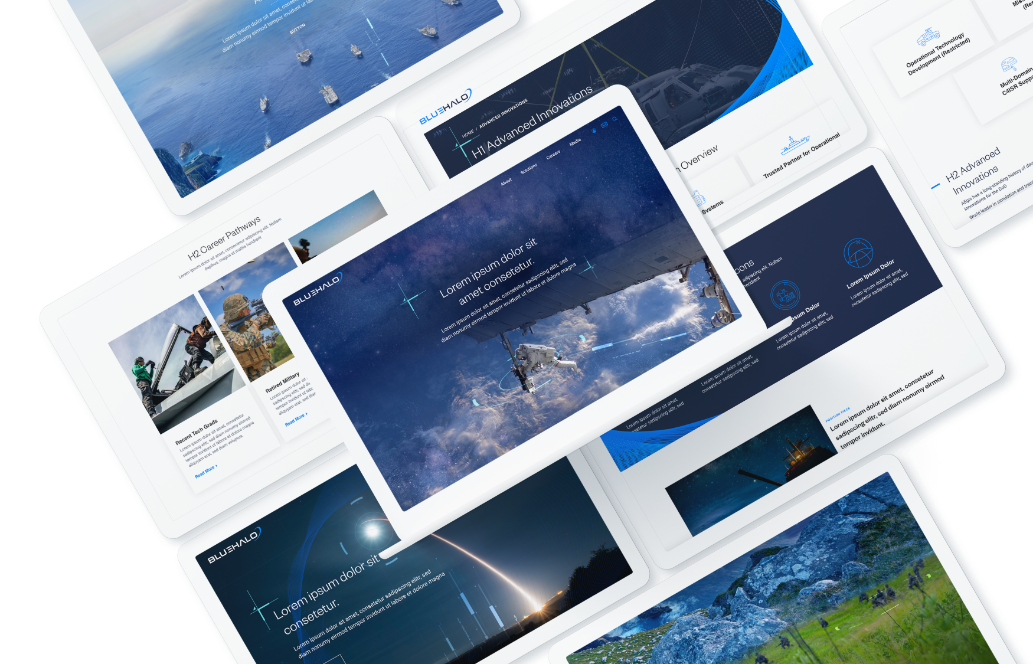
The tides have shifted. Once an industry that operated in an isolated silo of its own rules, businesses seeking government contracts must adopt new, digital marketing initiatives to effectively position themselves.B2G companies should leverage the data-driven, digital marketing tools developed for B2C companies to segment and personalize their approach to agency stakeholders. B2G is too broad a term, and even business-to-agency (B2A) abstracts away from the customer understanding your company needs to have to win contracts consistently. A business-to-stakeholder (B2S) marketing approach is what your company needs to win consistently.
To succeed in data-driven B2S marketing, we explore:
- What success looks like in B2S
- The lifecycle of data-driven stakeholder cultivation
- The division of labor between internal departments for successful execution of that lifecycle.
Begin with the End Goal in Mind
Before we determine how to develop our marketing and sales pipeline, we need to define success. Agency leadership and stakeholders can frequently change, at a minimum, with every new government administration.
Therefore, we prioritize targets that will allow your company to evolve as agency priorities and decision-makers change. Your company must first make its impression as a strong, reputable industry player, whilst also remaining top of mind through consistent brand recognition and relevant thought leadership content. These are the characteristics of a successful B2A marketing approach:
- Your company is considered a thought leader in the space where the agency is procuring products and services.
- Government agency stakeholders regularly call your company to ask your opinion on upcoming agency initiatives, product and service specifications, RFPs, and contract awards. Occasionally, you are invited to co-craft the RFP in ways that position your company to win.
- You are aware of the potential for shifting priorities months before those shifts occur.
- Information on the priorities and interests of your agency stakeholders is filtering directly to your sales team, who pass relevant information to content creators, who are crafting bespoke campaigns that reach your contacts as related conversations occur internally at the agencies.
- Business development staff follow up on that content with meaningful conversations with key stakeholders. Those conversations assure your agency contacts that your company is focused on their individual and organizational priorities.
- You have both breadth and depth of relationships at the agency: deep relationships with key stakeholders and associations across the organization. A few people leaving the agency does not impact your company’s ability to retain the status and relationships described above.
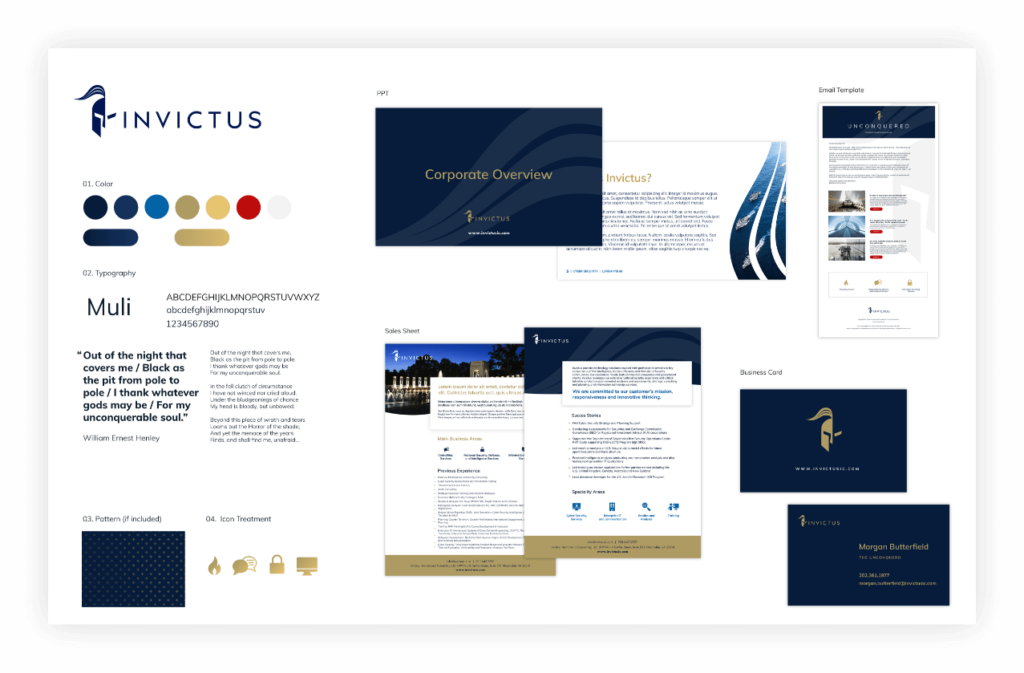
Does your content dress the part? A sure sign of a reputable industry player is professionally branded collateral assets, such as Invictus
The Stakeholder Development Lifecycle
In order to accomplish those goals, start by treating the agency as a combination of individual stakeholders and stakeholder groups. Organize your company’s sales and marketing approach around the Stakeholder Development Lifecycle for B2A marketing, which includes:
- Acquiring Stakeholder Contacts: Start with breadth. In order for your company to establish deep relationships in an agency, you need to acquire as many points of contact as possible. Target ads based on geolocation to get in front of as many relevant stakeholders as possible. Get their title, contact information, and social media presence. Build from there.
- Monitoring Stakeholder Contacts: Capture social media posts, digital content interaction (with a privacy-first approach of course), conference attendance, and internal agency relationship information from contacts over time so that you can understand and target their needs, interests, and priorities.
- Segmenting Stakeholder Contacts: Based on a contact’s position in the organization and their activities and expressed perspectives, segment them into groups that should be targeted and messaged together consistently.
- Nurturing Stakeholder Contacts: Develop marketing, business development, and sales outreach that messages contacts according to their segment and the depth of their relationship with your company. Build a customer journey map that helps you identify what messages move contacts deeper into understanding your company’s value proposition and believing in it.
- Fostering Stakeholder Promoters: Identify your company’s highest value and strongest promoting contacts as the champions your company needs to win individual contract awards. Prioritize according to how naturally the contact aligns with your company’s offerings and how important the contact is to your company’s long-term relationship with the agency.
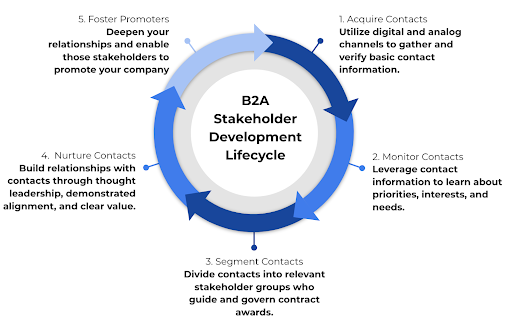
Stakeholder Development Lifecycle for B2A Marketing
Considering Stakeholder Segments
Within each agency, there are groups of stakeholders with priorities that will govern how well your company competes in a given contract award. The priorities of the agency can be efficiently stored within a single person’s head. But understanding the priorities of each stakeholder within each stakeholder group requires a data acquisition and data management approach that efficiently captures, aggregates, and generates insights about how your company is positioned with regard to that stakeholder group and the awards they oversee.
To understand how stakeholder priorities can differ, we use an example company, CyberSample, selling cybersecurity solutions to the Department of Transportation (DoT).
If CyberSample were to interface only with the DoT’s contract oversight and contract administration team, they would get a simplified and sanitized understanding of what governs the contract award. They would miss the critical details and priorities needed to assuage the concerns of each stakeholder group.
If they were to interface only with agency leadership or technology leadership, they would get a sense of broad organizational priorities and gain credibility from being introduced by internal power brokers. However, unless they leverage those introductions to dig deeper into specific needs surrounding an award, CyberSample’s team is unlikely to understand the tactical needs of technology implementers, users, or initiative leaders.
Example stakeholder groups and their corresponding priorities for CyberSample are provided in the figure below.

CyberSample stakeholder segments and their priorities. Segments and priorities should be validated by marketing interactions, public discussions, and business development and sales conversations.
Within each agency and with regard to each industry vertical selling into the agency, there will be a different set of stakeholder groups that influence decision-making. Your first task is to gather the intelligence needed to identify, segment, and target each stakeholder group. Taking a card from the B2C marketing playbook, it’s very similar to traditional customer personas, focus groups, data collection and tracking. Businesses that open their minds to alternative digital marketing and outreach methods are putting themselves miles ahead of the competition. This will allow you to move from a broad B2A approach to a more focused B2S methodology.
Executing on B2S Marketing with a Data-Driven Approach
For the approach described above to be successfully executed, each of your internal departments needs to coordinate. That coordination is built on a shared understanding of the agency landscape. A shared understanding requires a consistent and comprehensive approach to data collection, manipulation, and utilization.
Within the Contact Acquisition phase, your company’s Marketing and Content teams need to develop top-of-the-funnel landing pages, emails, webinars, white papers, and presentations that make agency contacts want to opt-in to a relationship with your company. Your Technology team needs to have the systems in place to capture customer interactions from your web properties and events, as well as to trigger intelligent outreach based on those interactions. Your Data team needs to clean and integrate the information captured from these interactions so that intelligence can filter back to Marketing, Content, Business Development, and Sales.
A summary of your company’s information needs is provided in the table below.
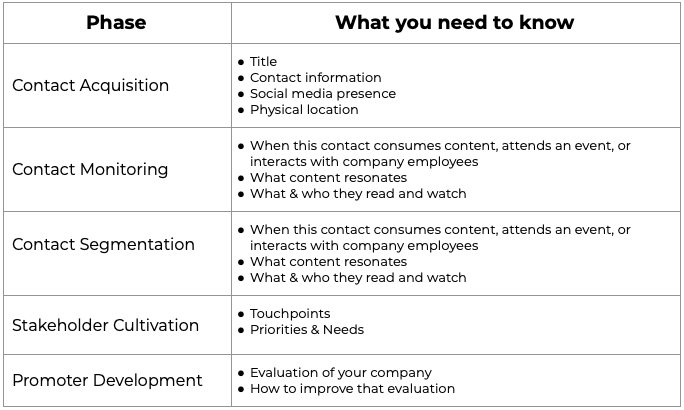
Once your company has acquired contacts and is actively monitoring activity, your Marketing, Content, and Business Development teams need to know what messages are resonating with agency stakeholders, and who are credible thought leaders through which to filter those messages. That provides the platform for new content development and for influencer marketing via the people who already have your stakeholders’ attention.
Those messages also enable the Business Development team to schedule meetings and start having conversations with stakeholders about their individual priorities and the interaction between those priorities and the organization at large. Your company can surface conflicts between agency groups to discover how to navigate potential barriers to contract awards.
Meanwhile, your Marketing team can deepen relationships with agency stakeholders through increasingly targeted messaging that moves those stakeholders closer to being promoters of your business. Your Product & Service team can ensure that your product or service value proposition is aligned with the priorities of each stakeholder group as you enter the RFP process. Your Business Development and Sales teams can focus on the individual needs of key stakeholders and customize your messaging to those stakeholders’ needs.
It is the job of your Data team to ensure that each department has the intelligence they need, when and where they need it, to effectively cultivate those relationships and respond with well-honed sales and marketing messages.
Below, we illustrate the division of labor between different departments throughout the Stakeholder Development Lifecycle.
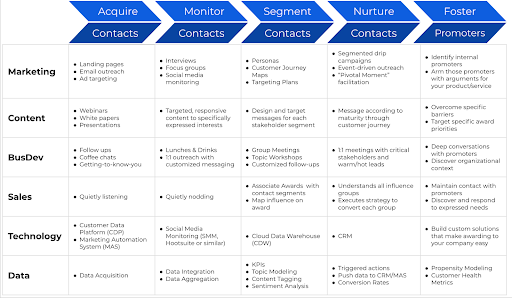
Division of Labor Between Departments for the Stakeholder Development Lifecycle
With an improved strategic approach to B2A marketing, focusing directly on the stakeholders, and a commitment to building the infrastructure and processes to gather and interpret data about them, your company will be better positioned to win government contracts for many years to come.
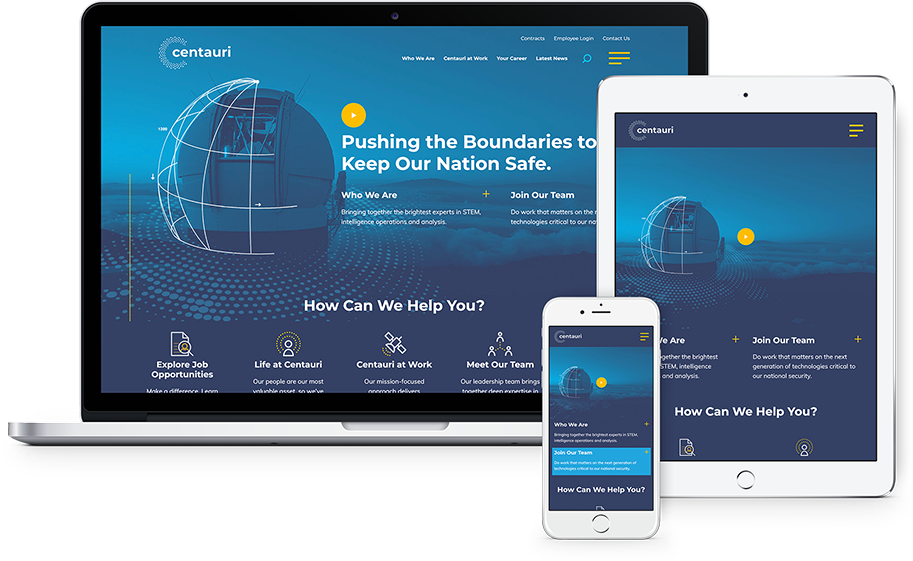
Centauri utilized Bluetext’s services to launch a new name, brand, and website following a merger. Their go-to-market strategy succeeded in winning new awards, company recruits, and even an acquisition from KBR. Check out how Bluetext has set up more brands for M&A success.
How Do I Get Started?
For the approach described above to be successfully executed, each of your internal departments needs to coordinate. That coordination is built on a shared understanding of the landscape within the agency. A shared understanding requires a consistent and comprehensive approach to data collection, manipulation, and utilization.
The starting point depends on the maturity of your company, specifically in the Data and Marketing Teams. For those with fully staffed teams that can execute, you can follow the plan outlined in this post.
The Data Team holds responsibility for timely, reliable access to data to allow the MarCom Team to execute and your other teams to act on the results. If you are still attempting to develop the overall strategy and buy-in from departmental or executive leadership, or if you don’t have the confidence in the systems in place, Bluetext has several options to help you move forward:
- Data Summit: This workshop is customized to your specific requirements, but is designed to bring together stakeholders from the relevant departments to educate them on the goals of the initiative, gather input from various departments about any concerns or limitations, and move toward a consensus regarding the strategic approach that will improve your targeted marketing efforts.
- Data & Systems Assessment: For those who have made the decision to move forward with improved data-driven marketing, it is critical to have confidence in your data systems (reliability, scalability, and accessibility), data governance (security and policies), and ROI (time to value and budget). Our assessment process addresses all of these aspects and culminates with the development and delivery of a Data Infrastructure and Capabilities Roadmap (DICR). The DICR includes the findings of the assessment, strategic vision, proposed infrastructure solution, and an implementation plan (typically phased).
With the organizational buy-in in place, and you have the data and reliable systems in place, but require assistance in execution in the marketing and content, working with industry-leading partners like Bluetext will allow you to start executing your strategy.
Bluetext brings the marketing and business development expertise needed to elevate your targeting and messaging and brings the data expertise needed to make your web, marketing, sales, and business development data work for you. Reach out to start the conversation about how we can position your company to succeed with government agency marketing and business development.
This post is a collaborative effort with Ross Katz and our partners at CorrDyn, a data-driven consultancy that helps enable scalable growth. CorrDyn’s data expertise combined with Bluetext’s command of marketing provides an additional opportunity to segment and target in the B2G marketplace.
Where is the next great opportunity for your business? Well, government agencies for one. According to USAspending.gov, approximately five trillion dollars is being allocated to government agencies in Fiscal Year 2021, with over $1 trillion going to Health and Human Services alone. These agencies are growing, and their needs for hardware, software, and services are increasing along with them.
If you are already marketing to “the government,” you understand that winning government contracts is a long sales cycle. The opportunity-to-award process might be 90 days on average, but the lead-up to those 90 days is a critical period where the deal is won or lost. During those 90 days, all data gathering and relationship-building you have done over the previous 2-5 years comes to fruition. So what exactly sets the winning businesses apart? Memorability. Government contracting is a long game, built on endurance. After many years of B2G marketing experience, Bluetext is here to break down what gets your foot in the door and sustains success in business to government marketing.

Division of time between positioning your company for success with government agencies and bidding on specific contract awards.
Winning government contracts is not as simple as pointing your existing sales and marketing engine at a new target. “The government” is not a monolithic entity, and even “the agency” needs to be treated with more nuance: It is composed of dozens of sub-entities that make independent decisions based on independent decision criteria. In enterprise sales, winning over a single decision-maker can often close the deal. In government contracts, groups of stakeholders across the agency influence which business wins the contract, even if a single decision-maker completes the signs off. So instead of persuading a single stakeholder, B2G companies are tasked with winning over multiple groups, at multiple different stages and occasions. Hence, why brand endurance is critical.
Complicating matters further, traditional channels for establishing relationships with government agencies have been disrupted by the pandemic. Most in-person conferences and meetings will not occur this year, and some will remain online for the foreseeable future. Government stakeholders are more geographically distributed and digitally dependent than ever.

The tides have shifted. Once an industry that operated in an isolated siloe of its own rules, business seeking government contracts must adopt new, digital marketing initiatives to effectively position themselves.B2G companies should leverage the data-driven, digital marketing tools developed for B2C companies to segment and personalize their approach to agency stakeholders. B2G is too broad a term, and even business-to-agency (B2A) abstracts away from the customer understanding your company needs to have to win contracts consistently. A business-to-stakeholder (B2S) marketing approach is what your company needs to win consistently.
To succeed in data-driven B2S marketing, we explore:
- What success looks like in B2S
- The lifecycle of data-driven stakeholder cultivation
- The division of labor between internal departments for successful execution of that lifecycle.
Begin with the End Goal in Mind
Before we determine how to develop our marketing and sales pipeline, we need to define success. Agency leadership and stakeholders can frequently change, at a minimum, with every new government administration.
Therefore, we prioritize targets that will allow your company to evolve as agency priorities and decision-makers change. Your company must first make its impression as a strong, reputable industry player, whilst also remaining top of mind through consistent brand recognition and relevant thought leadership content. These are the characteristics of a successful B2A marketing approach:
- Your company is considered a thought leader in the space where the agency is procuring products and services.
- Government agency stakeholders regularly call your company to ask your opinion on upcoming agency initiatives, product and service specifications, RFPs, and contract awards. Occasionally, you are invited to co-craft the RFP in ways that position your company to win.
- You are aware of the potential for shifting priorities months before those shifts occur.
- Information on the priorities and interests of your agency stakeholders is filtering directly to your sales team, who pass relevant information to content creators, who are crafting bespoke campaigns that reach your contacts as related conversations occur internally at the agencies.
- Business development staff follow up on that content with meaningful conversations with key stakeholders. Those conversations assure your agency contacts that your company is focused on their individual and organizational priorities.
- You have both breadth and depth of relationships at the agency: deep relationships with key stakeholders and associations across the organization. A few people leaving the agency does not impact your company’s ability to retain the status and relationships described above.

Does your content dress the part? A sure sign of a reputable industry player is professionally branded collateral assets, such as Invictus
The Stakeholder Development Lifecycle
In order to accomplish those goals, start by treating the agency as a combination of individual stakeholders and stakeholder groups. Organize your company’s sales and marketing approach around the Stakeholder Development Lifecycle for B2A marketing, which includes:
- Acquiring Stakeholder Contacts: Start with breadth. In order for your company to establish deep relationships in an agency, you need to acquire as many points of contact as possible. Target ads based on geolocation to get in front of as many relevant stakeholders as possible. Get their title, contact information, and social media presence. Build from there.
- Monitoring Stakeholder Contacts: Capture social media posts, digital content interaction (with a privacy-first approach of course), conference attendance, and internal agency relationship information from contacts over time so that you can understand and target their needs, interests, and priorities.
- Segmenting Stakeholder Contacts: Based on a contact’s position in the organization and their activities and expressed perspectives, segment them into groups that should be targeted and messaged together consistently.
- Nurturing Stakeholder Contacts: Develop marketing, business development, and sales outreach that messages contacts according to their segment and the depth of their relationship with your company. Build a customer journey map that helps you identify what messages move contacts deeper into understanding your company’s value proposition and believing in it.
- Fostering Stakeholder Promoters: Identify your company’s highest value and strongest promoting contacts as the champions your company needs to win individual contract awards. Prioritize according to how naturally the contact aligns with your company’s offerings and how important the contact is to your company’s long-term relationship with the agency.

Stakeholder Development Lifecycle for B2A Marketing
Considering Stakeholder Segments
Within each agency, there are groups of stakeholders with priorities that will govern how well your company competes in a given contract award. The priorities of the agency can be efficiently stored within a single person’s head. But understanding the priorities of each stakeholder within each stakeholder group requires a data acquisition and data management approach that efficiently captures, aggregates, and generates insights about how your company is positioned with regard to that stakeholder group and the awards they oversee.
To understand how stakeholder priorities can differ, we use an example company, CyberSample, selling cybersecurity solutions to the Department of Transportation (DoT).
If CyberSample were to interface only with the DoT’s contract oversight and contract administration team, they would get a simplified and sanitized understanding of what governs the contract award. They would miss the critical details and priorities needed to assuage the concerns of each stakeholder group.
If they were to interface only with agency leadership or technology leadership, they would get a sense of broad organizational priorities and gain credibility from being introduced by internal power brokers. However, unless they leverage those introductions to dig deeper into specific needs surrounding an award, CyberSample’s team is unlikely to understand the tactical needs of technology implementers, users, or initiative leaders.
Example stakeholder groups and their corresponding priorities for CyberSample are provided in the figure below.

CyberSample stakeholder segments and their priorities. Segments and priorities should be validated by marketing interactions, public discussions, and business development and sales conversations.
Within each agency and with regard to each industry vertical selling into the agency, there will be a different set of stakeholder groups that influence decision-making. Your first task is to gather the intelligence needed to identify, segment, and target each stakeholder group. Taking a card from the B2C marketing playbook, it’s very similar to traditional customer personas, focus groups, data collection and tracking. Businesses that open their minds to alternative digital marketing and outreach methods are putting themselves miles ahead of the competition. This will allow you to move from a broad B2A approach to a more focused B2S methodology.
Executing on B2S Marketing with a Data-Driven Approach
For the approach described above to be successfully executed, each of your internal departments needs to coordinate. That coordination is built on a shared understanding of the agency landscape. A shared understanding requires a consistent and comprehensive approach to data collection, manipulation, and utilization.
Within the Contact Acquisition phase, your company’s Marketing and Content teams need to develop top-of-the-funnel landing pages, emails, webinars, white papers, and presentations that make agency contacts want to opt-in to a relationship with your company. Your Technology team needs to have the systems in place to capture customer interactions from your web properties and events, as well as to trigger intelligent outreach based on those interactions. Your Data team needs to clean and integrate the information captured from these interactions so that intelligence can filter back to Marketing, Content, Business Development, and Sales.
A summary of your company’s information needs is provided in the table below.

Once your company has acquired contacts and is actively monitoring activity, your Marketing, Content, and Business Development teams need to know what messages are resonating with agency stakeholders, and who are credible thought leaders through which to filter those messages. That provides the platform for new content development and for influencer marketing via the people who already have your stakeholders’ attention.
Those messages also enable the Business Development team to schedule meetings and start having conversations with stakeholders about their individual priorities and the interaction between those priorities and the organization at large. Your company can surface conflicts between agency groups to discover how to navigate potential barriers to contract awards.
Meanwhile, your Marketing team can deepen relationships with agency stakeholders through increasingly targeted messaging that moves those stakeholders closer to being promoters of your business. Your Product & Service team can ensure that your product or service value proposition is aligned with the priorities of each stakeholder group as you enter the RFP process. Your Business Development and Sales teams can focus on the individual needs of key stakeholders and customize your messaging to those stakeholders’ needs.
It is the job of your Data team to ensure that each department has the intelligence they need, when and where they need it, to effectively cultivate those relationships and respond with well-honed sales and marketing messages.
Below, we illustrate the division of labor between different departments throughout the Stakeholder Development Lifecycle.

Division of Labor Between Departments for the Stakeholder Development Lifecycle
With an improved strategic approach to B2A marketing, focusing directly on the stakeholders, and a commitment to building the infrastructure and processes to gather and interpret data about them, your company will be better positioned to win government contracts for many years to come. We understand that building the Stakeholder Development Lifecycle from the ground up may be daunting, which is why Bluetext and CorrDyn are partnering to help B2A companies build the systems, processes, and brand assets needed to accelerate your path to agency contract awards.

Centauri utilized Bluetext’s services to launch a new name, brand, and website following a merger. Their go-to-market strategy succeeded in winning new awards, company recruits, and even an acquisition from KBR. Check out how Bluetext has set up more brands for M&A success.
How Do I Get Started?
For the approach described above to be successfully executed, each of your internal departments needs to coordinate. That coordination is built on a shared understanding of the landscape within the agency. A shared understanding requires a consistent and comprehensive approach to data collection, manipulation, and utilization.
The starting point depends on the maturity of your company, specifically in the Data and Marketing Teams. For those with fully staffed teams that can execute, you can follow the plan outlined in this post.
The Data Team holds responsibility for timely, reliable access to data to allow the MarCom Team to execute and your other teams to act on the results. If you are still attempting to develop the overall strategy and buy-in from departmental or executive leadership, or if you don’t have the confidence in the systems in place, Bluetext and CorrDyn can help you move forward:
- Data Summit: This workshop is customized to your specific requirements, but is designed to bring together stakeholders from the relevant departments to educate them on the goals of the initiative, gather input from various departments about any concerns or limitations, and move toward a consensus regarding the strategic approach that will improve your targeted marketing efforts.
- Data & Systems Assessment: For those who have made the decision to move forward with improved data-driven marketing, it is critical to have confidence in your data systems (reliability, scalability, and accessibility), data governance (security and policies), and ROI (time to value and budget). Our assessment process addresses all of these aspects and culminates with the development and delivery of a Data Infrastructure and Capabilities Roadmap (DICR). The DICR includes the findings of the assessment, strategic vision, proposed infrastructure solution, and an implementation plan (typically phased).
With the organizational buy-in in place, and you have the data and reliable systems in place, but require assistance in execution in the marketing and content, working with industry-leading partners like Bluetext will allow you to start executing your strategy.
Bluetext brings the marketing and business development expertise needed to elevate your targeting and messaging. CorrDyn brings the data expertise needed to make your web, marketing, sales, and business development data work for you. Reach out to start the conversation about how we can position your company to succeed with government agency marketing and business development.
It’s no secret that any business striving for success has to find a way to differentiate themselves from their competition. The same goes for companies operating in the government contracting arena, where players big, small, old, and new, are all looking for ways to get their messages into the market uniquely.
I know what you’re thinking… so much easier said than done, right? Well, what if I told you that a solid and effective brand story is one of the most critical ingredients of a government contractor’s success? And, what if I told you that as a government contracting marketing expert that specializes in brand storytelling, Bluetext can help you significantly improve your market standing and brand goals?
Now that I’ve got your attention, keep reading to learn more about why brand storytelling is so critical in government contracting, and just what Bluetext can do for you.
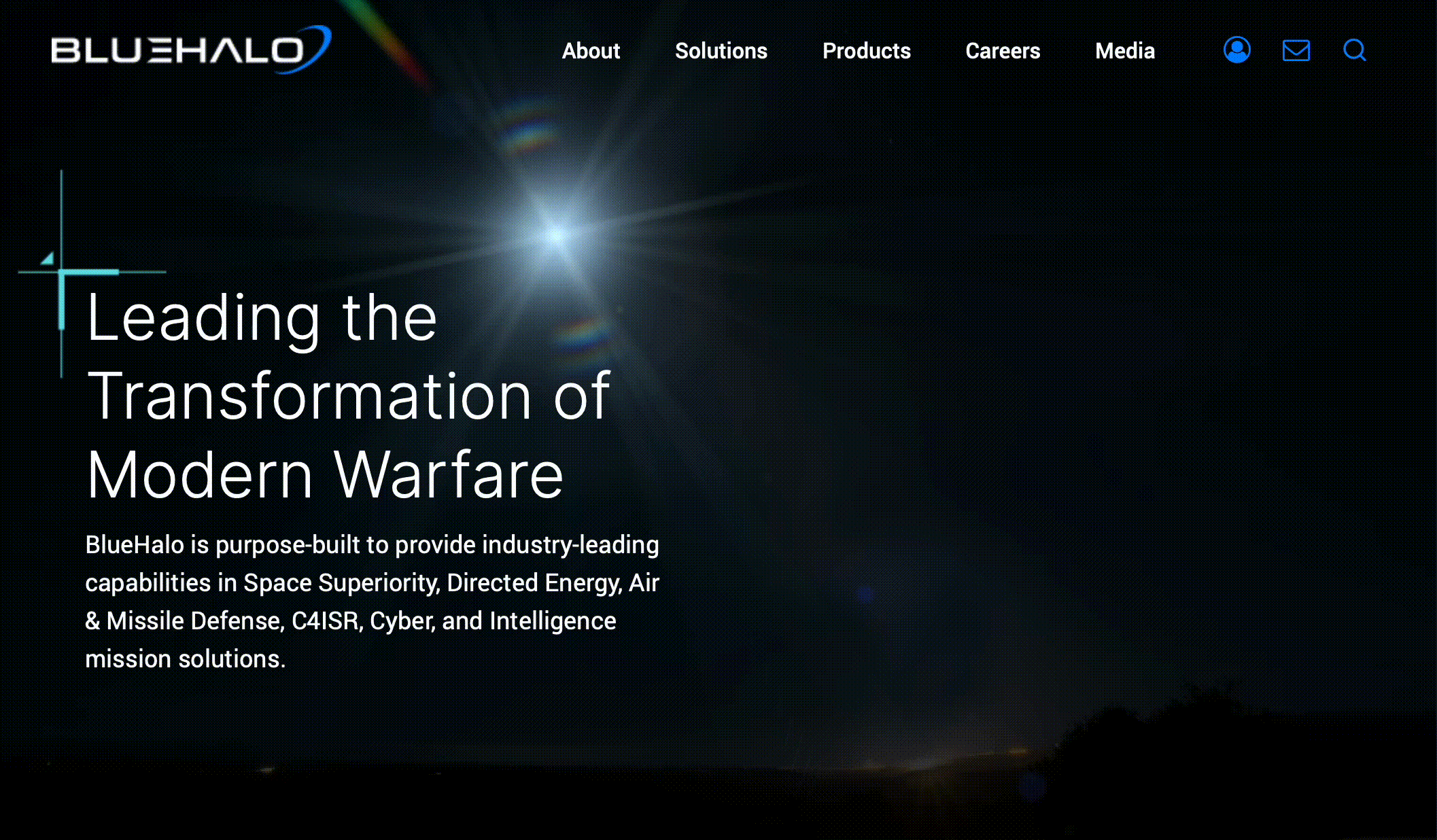
So, why exactly should I care about brand storytelling?
The reality of the situation is that without a strong brand story, many government services providers look exactly alike. Strong brand storytelling can make a government contractor stand out and come to stand for something valuable to all of the stakeholders. In a trust-based industry like government contracting, a resonant message can both attract and motivate buyers to conduct business with your company.
In a world so focused on numbers, proposals, minimizing risk and technical requirements, it can be easy to forget that your buyers are still human! Yes, they want to understand your company, services, and products and see those fancy charts and data, but they also want to relate. Most proposals are going to have very similar data, and after so many they all seem the same. What won’t be the same is the emotion tied to your company‘s proposal — if you tell your story right. Customers need to recognize your brand and trust that you are the right organization to fulfill their contracts in the long term.
That’s where brand storytelling comes in to help.
Studies show that humans actually rely heavily on our subconscious feelings to make decisions and that we respond positively to the impact of stories. That’s why storytelling is such a powerful tool to help evoke positive emotions around your brand and facilitate connections with your audience. When your audience connects with your story, they will pay attention longer, want to learn more, and be more trusting of your brand.
Storytelling that is consistent with your brand allows your audience to see the how and why behind your products or services. It allows them to be enticed by your company without being explicitly aware that they were in a sales pitch. Across any industry, tolerance is low for gimmicky sales ploys. However, there is attention bandwidth to be gained for a corporate responsibility and clear values. Companies who get this right are companies who win government contracts.
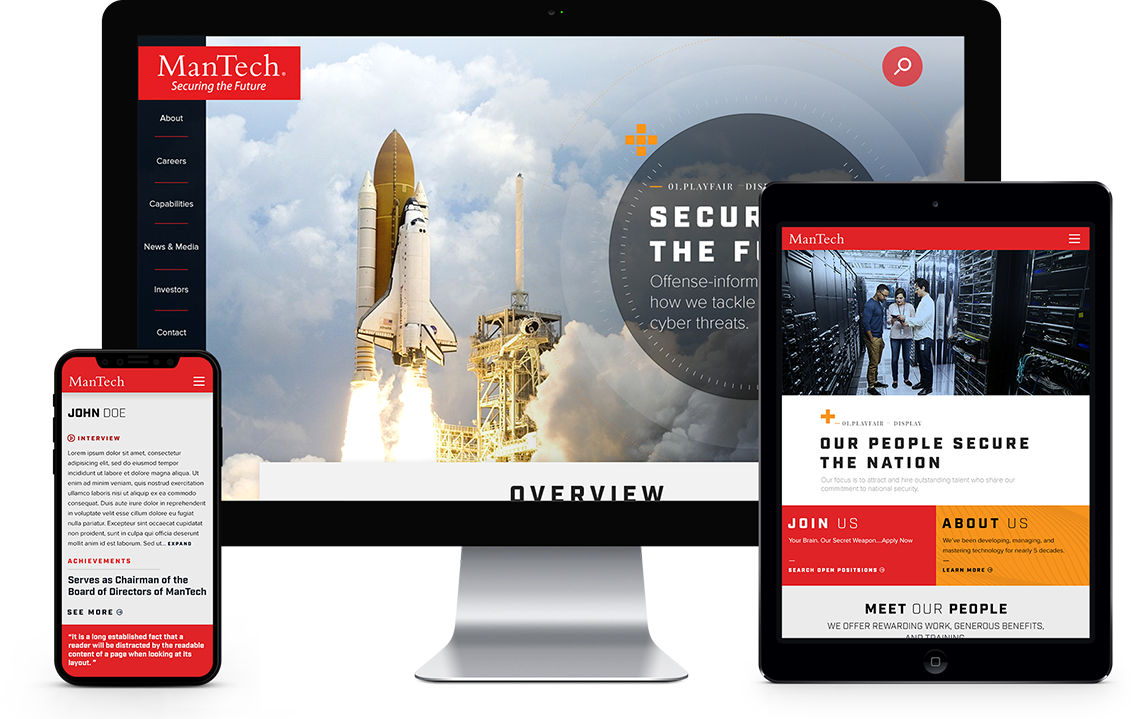
Okay, I’m in. But how do I get my brand storytelling right?
Enter: Bluetext.
As a top brand development agency, we’ve worked across industries to learn the most effective ways to tell unique brand stories. We have worked with countless government contracting firms to help them tell their stories in a way that captivates audiences, leads to real, tangible business results, and establishes them as a trusted partner who can solve real-world problems.
Check out a few of our favorite examples of storytelling in government contracting below:
 Convinced? Contact Us if you’re ready to work with a government contracting marketing firm to help tell your story.
Convinced? Contact Us if you’re ready to work with a government contracting marketing firm to help tell your story.
When it comes to reaching and selling to government agency decision-makers, a colleague of mine often smartly reminds our clients and prospects of the following: there is no “government.” By that, he means there isn’t this single, monolithic entity you can build B2G PR and B2G Marketing campaigns around.
It is far more nuanced; not only between DoD, civilian, homeland security, intelligence, federal, state, and local but often down to specific agencies. Or in the case of DoD, specific Bases, Programs, and Offices you may want to reach, such as The Joint Artificial Intelligence Center (JAIC), Project Convergence 21, Army Futures Command, DHS Science and Technology Directorate (S&T), StateRAMP and so many others.
The Account-Based Marketing (ABM) approach (which encompasses Account-Based PR as well) has been around for decades – often a core concept for B2B enterprises to leverage data on a prospect’s specific needs and priorities that they can then build highly customized lead generation campaigns around. ABM and ABPR are also relevant for government contractors, Federal IT providers, and others selling to the “government”, because as we noted each stakeholder target is driven by different needs and priorities.

In my last blog post I looked at B2G PR and Marketing strategies for government contractors involved in M&A activity. Today’s post is more broadly geared towards organizations looking to develop a highly targeted B2G Account-Based PR strategy to effectively reach, influence, and sell to specific government stakeholders.
Before embarking on this effort, consider these 6 strategies:
Tailor efforts to government acquisition cycle.
Sounds basic, but when you are working backward to build out a multi-month strategy it matters. If you build a PR campaign that starts too late (or early) you will not be hitting decision-makers at the optimal time when they are primed to be thinking about buying new products and technologies.
You know the Federal fiscal year by heart (Oct. 1 – Sept. 30), and that State fiscal years vary slightly state-to-state but most run July 1st-June 30th). Recognizing that agency decision-makers will cycle through various stages of the buyer’s journey during these months, PR programs should tailor content and PR efforts to align with that calendar. Depending on how well known your brand is to the decision-maker(s) you want to reach, winter and spring may be better suited to awareness and education campaigns. Thought leadership in the form of speaking, byline articles, ads, and sponsored content can start the process of making your brand more present to relevant audiences. As summer approaches the buyer mindset shifts more to decision mode, so pushing PR efforts further down the funnel can mean case studies, webinars, white papers, and lead gen paid social campaigns speaking to highly specific target pain points and solution benefits make more sense. PR during this time should also call out clear differentiators relative to competitors. As September approaches and agencies accelerate buying, PR can be utilized to really hone in on specific individuals to make sure they have the full brand and solution story.
Account for contract vehicle structure
Indefinite Delivery/Indefinite Quantity (IDIQ), GSA Schedules, Governmentwide Acquisition Contracts (GWACs), BPAs, Small Business Set-Asides and, well you get the picture. There is no shortage of contract vehicles that a B2G organization is pursuing at any given time. Each vehicle has its own requirements, which means that decision-makers may be looking for different messages. For a single-award IDIQ, you may need to center PR activity around your own capabilities and ability to deliver as a single vendor. For other vehicles, PR needs to account for the strengths of multiple vendors. Each account or agency-based PR campaign should account for contract vehicles if your efforts are specific to one vehicle.
Approach B2G PR as you would advertising
PR and advertising are not the same. But they share commonalities when it comes to effective campaigns. For one, you can’t just hit agency decision-makers once or twice and expect those efforts to be sufficient to make an impact that lasts weeks or months through the buyer’s journey.
Like advertising, repetition matters. Unless it is the Super Bowl, brands don’t just buy a single ad and then return to regularly scheduled programming. For B2G, you have to not only hit prospects over time but do it through multiple channels. If you are targeting a specific Army base, a PR campaign can develop messaging and content around specific programs at that location. These efforts can be buffeted by paid media campaigns that are geo-targeted around the base locations.
Finally, despite COVID-19 and expanded remote work, your buyer is likely to still be commuting to and from government offices, bases, or facilities at least part of the time. Beyond reaching decision-makers through earned and paid media, consider Out-of-Home (OOH) advertising on billboards, transportation, and public transportation in the early brand awareness phases of your ABPR campaigns. The diversity of channels you can push messages across – in addition to the frequency – is a powerful combination if correctly targeted.
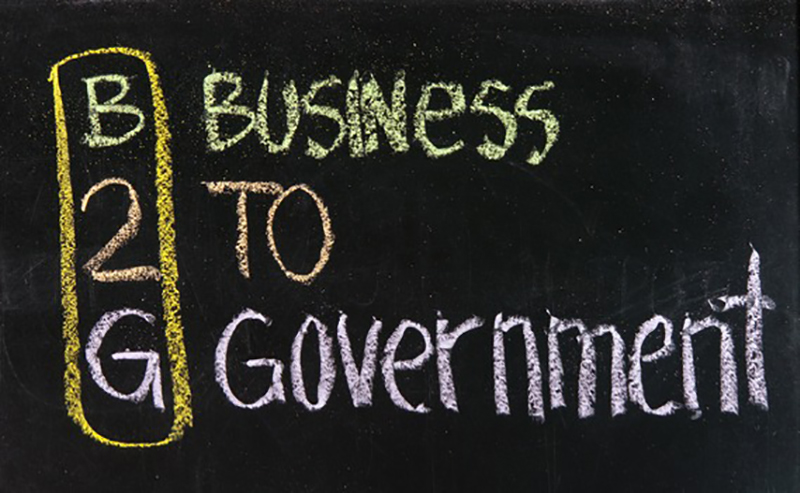
Participate, differentiate, dominate
If you are a well-known commodity within the public sector great, PR to support contract pursuits won’t require a lot of focus on establishing brand credibility. But there are thousands of firms selling to the government, and even if one agency or DoD unit knows you, others may not. Or they may know you for some products and services but not others.
The point is, securing inclusion in articles in government publications about trends and challenges of interest to agency decision-makers can be critical. So if you are a lesser-known brand, step one is to participate: start participating in conversations even if it is alongside competitors. “No one gets fired for buying Microsoft” is an enduring adage, but if your brand is listed alongside larger competitors and multi-billion dollar government contractors, it can raise brand credibility. Then, once you start participating in media articles, there is an opportunity to differentiate your technology from competitors. What makes you different? How are you better positioned to enable mission success? Finally, you can start dominating conversations, driving the conversation as a market thought leader and innovator.
Tailor PR content for top-down and bottom-up approaches
The straightest line to securing government contracts often leads to the senior-level leadership involved in direct buy-in for vendor products and services. But depending on what you are selling, bottoms-up PR and content development can have value. Think about the ultimate users for services like DevOps, technical audiences that can get exposed to your brand and capabilities. If a team of developers or developer managers pushes senior leadership to evaluate your solution that will carry significant weight.
As you develop a PR and content strategy, consider the level of content to reach varying audience levels. Technical content that resonates with product/technology users won’t have the same impact with senior leaders more focused on mission success and doing more with less.
Get creative
Account-based PR for B2G has been upended by COVID-19. In-person conferences, events, and demo days that offered an opportunity to reach agency decision-makers directly pre-COVID are gone and will be slow to return in full force. At the same time, large chunks of the sales process have shifted from physical to digital.
B2G firms that have succeeded over the past year stayed nimble and creative in reaching these audiences. Some are evaluating and deploying Digital Briefing Centers as a way to surround prospects with thought leadership, rich content, and interactive UX and recreate the in-person premium briefing experience lost during the pandemic. Elevating your brand and solutions above the crowd is always a challenge, even more so in a digital world where the barriers to entry drop dramatically.

If you are a B2G brand interested in exploring integrated PR and marketing campaigns that target specific government agencies, programs, or decision-makers, give Bluetext a holler as we’d love to chat.
Developing an effective Business to Government (B2G) marketing strategy to reach decision-makers in the public sector requires a handful of marketing tactics, perhaps the most impactful of which is a well-founded public relations program. However, before diving headfirst into a multi-faceted digital marketing campaign, it is critical to recognize that government agencies have many different challenges than private-sector organizations, and therefore doing business with these agencies requires a much more tailored approach.
Many government agencies, especially at the state and local level, work in silos — meaning that it is often difficult for these agencies to get the technology, resources and expertise they need to efficiently serve their citizens. One recent survey found that more than 80% of U.S. government officials feel their agency is technologically behind where it needs to be in order to handle the new challenges it faces.
In order to effectively engage federal, state, and/or local government agencies, businesses must first understand the perspectives and challenges those entities face and where to best reach them. Once you’ve gotten a grasp on the barriers and challenges agencies face in working with you, you can begin to build out a content strategy that addresses those challenges and helps you get a foot in the door. Luckily, experienced PR agencies are well-versed in how to help cultivate messaging that will resonate with both government-oriented media outlets as well as the decision-makers themselves.

Target content at agency decision-makers
In order to speak the language of government decision-makers, contractors need to develop content that speaks directly to agency decision-maker pain-points. Government agency contractors must also understand that government decision-makers are driven by different motivators than in an enterprise environment.
Everything does not necessarily revolve around profits for them, therefore content must speak to decision-makers’ primary pain points. Messages that pivot away from the bottom-line, and refocus on unique challenges of the targeted government agencies will earn attention. Timing is also critical — organizations must hit decision-makers at the right time in the procurement process with content and knowledge that stands out in what is a very commoditized market where government-contractor and tech company messaging all seem to blur together.

Establish expertise in your market category
Understanding your organization’s existing and aspirational market footprint is the first step in carving out a niche that you can own as a thought leader. For example, there are countless cybersecurity vendors in the public sector, all of which sell a variety of security solutions that promise relatively similar results e.g. “visibility, detection, the response against evolving threats.” To gain real traction as a thought leader in the public sector, you must drill down into your specific two to three areas of expertise.
Once you’ve laser-focused on the arena in which you’re planning to own, a PR team of consultants can help you build out an editorial calendar of topics and discussions you want to participate in to align your content with quarterly and annual sales goals. This process of self-vetting and prioritizing will result in an organized and unified message about your company and its areas of knowledge when featured in editorial and published content.

Identify and prioritize your future-oriented solutions
Many organizations in the B2G marketplace make the mistake of getting stuck in the ruts in which they have always operated. They may have one or two solutions that sell well to their target audiences, so they become complacent in innovating new product lines or messaging.
For example, in the 1960s and 70s tech-giant, IBM’s top-grossing product was a typewriter. It may have seemed safe at the time to streamline their operations and prioritize their top-grossing product as opposed to developing and pitching new products and technologies to their customers. With the benefit of time we now realize that typewriters were soon made obsolete by keyboard computers, meaning that if IBM would have centered its business model around typewriters, they would not be the tech giant with a global footprint they have today.
All this goes to say, it is imperative that businesses selling to government agencies consider that their top-grossing products may soon be eclipsed by newer, faster, stronger, and more advanced solutions. Keeping an eye and ear toward future government agency needs will help organizations stay on the cutting edge of tech demands in government. Cultivating relevant, thought-provoking content that stands out to public sector decision-makers is one of the primary in-roads to conducting business with the government. If you want to learn more about how we have driven successful B2G content programs through PR and digital campaigns, get in touch with Bluetext.
Amidst all of the business uncertainty in 2020 due to COVID-19, one area that remained relatively stable was a healthy volume of M&A activity for government contractors and government IT service providers.
You would be hard-pressed to find a tech PR and marketing agency that has helped to support the number of successful M&A events in the public sector space as Bluetext. It’s a big reason government contractors and Federal IT providers – along with private equity firms – turn to us to develop B2G PR campaigns that are designed for this very purpose. Thirty-four times in fact, Bluetext clients have been acquired within 24 months of an engagement with our agency.
I recently put together an op-ed for Washington Technology with 5 key PR strategies for B2G firms to consider before, during, and after an M&A transaction event. You can find the article here.
To learn more about our work with B2G clients in the M&A arena and how we may be able to help you achieve your own M&A goals, contact us today.